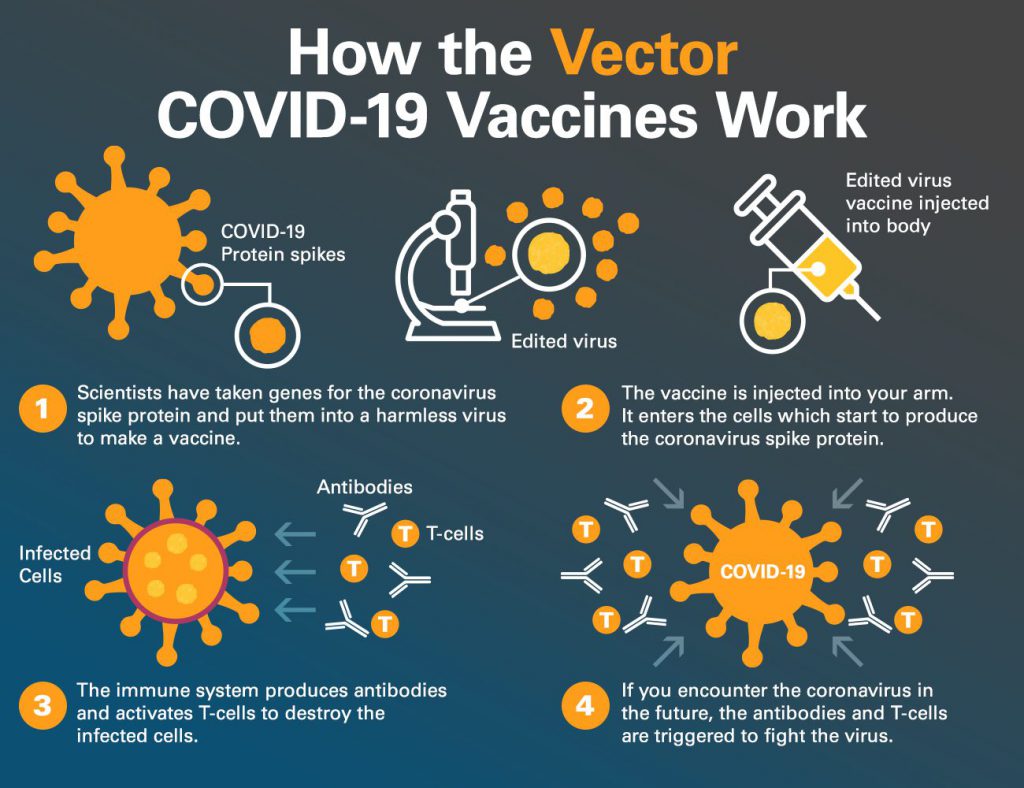
Understanding how the COVID-19 vaccine works
Johnson & Johnson’s one-dose COVID-19 vaccine has become the third COVID-19 vaccine given Emergency Use Authorization (EUA) by the U.S. Food and Drug Administration (FDA). The Johnson & Johnson vaccine uses a harmless adenovirus to activate an immune response to the coronavirus spike protein. As we work to vaccinate more of our patients and communities, we’re working to increase understanding around how the different vaccines work to protect against COVID-19 and why the best vaccine is the one you can get.
How COVID-19 Vaccines Work
COVID-19 vaccines help our bodies develop immunity to the virus that causes COVID-19 without us having to get the illness. Different types of vaccines work in different ways to offer protection, but with all types of vaccines, the body is left with a supply of “memory” cells that will remember how to fight that virus in the future.
It typically takes a few weeks after your last dose of vaccine for your body to have the highest level of protection.
Sometimes after vaccination, the process of building immunity can cause symptoms, such as fever, muscle aches, feeling tired. These symptoms are normal and are a sign that the body is building immunity.
Types of Vaccines
Currently, there are two types of COVID-19 vaccines that are authorized for emergency use in the United States. None of these vaccines can give you COVID-19 because they do not contain any live COVID virus.
- mRNA vaccines contain material from the virus that causes COVID-19 that gives our cells instructions for how to make a harmless protein that is unique to the virus. After our cells make copies of the protein, they destroy the genetic material from the vaccine. Our bodies recognize that the protein should not be there and build cells that will remember how to fight the virus that causes COVID-19 if we are infected in the future. (Moderna, Pfizer- BioNTech)
- Vector vaccines contain a weakened version of a live virus—a different virus than the one that causes COVID-19—that has genetic material from the virus that causes COVID-19 inserted in it (this is called a viral vector). Once the viral vector is inside our cells, the genetic material gives cells instructions to make a protein that is unique to the virus that causes COVID-19. Using these instructions, our cells make copies of the protein. This prompts our bodies to build cells that will remember how to fight that virus if we are infected in the future. (Johnson and Johnson)

How the Vector COVID-19 Vaccines Work – Trinity Health
Most COVID-19 Vaccines Require More Than One Shot
All but one of the COVID-19 vaccines that are currently authorized for emergency use in the United States use two shots. The first shot starts building protection. A second shot a few weeks later is needed to get the most protection the vaccine has to offer. One vaccine (Johnson and Johnson) only needs one shot to provide protection.
The Bottom Line
Getting vaccinated is one of many steps you can take to protect yourself and others from COVID-19. Protection from COVID-19 is critically important because for some people, it can cause severe illness or death. All vaccines have been proven to prevent serious illness, hospitalization and death. It doesn’t matter which vaccine you get, just get vaccinated when it is your turn.
Stopping a pandemic requires using all the tools available. Vaccines work with your immune system so your body will be ready to fight the virus if you are exposed. Other steps, like masks and physical distancing, help reduce your chance of being exposed to the virus or spreading it to others. Together, COVID-19 vaccination and following CDC’s recommendations to protect yourself and others will offer the best protection from COVID-19.
Learn more and read frequently asked questions about the COVID-19 vaccination.
